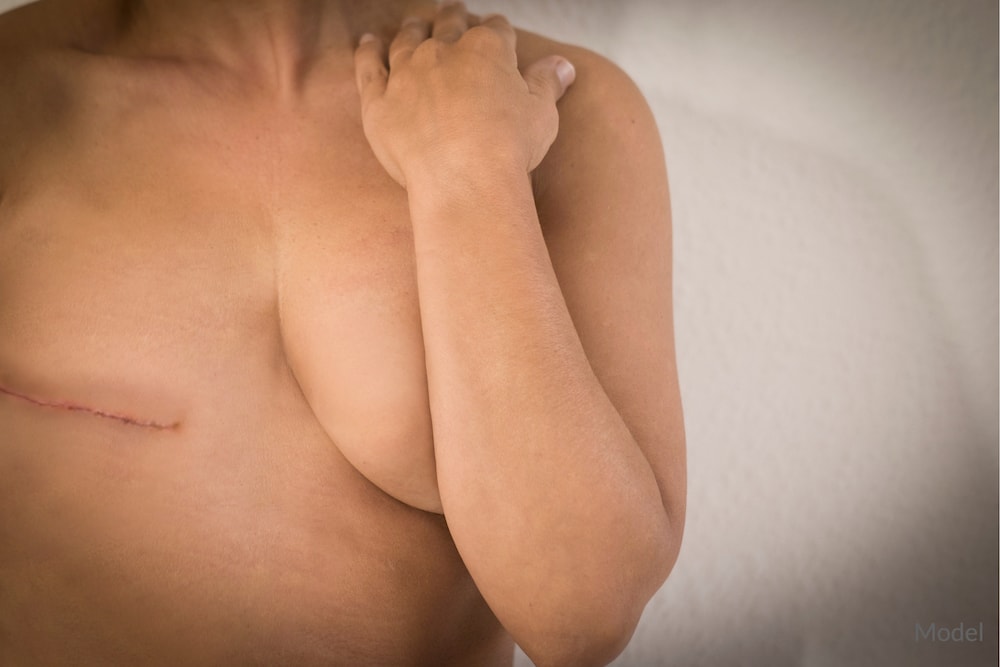Posted May 15, 2020 in Breast Reconstruction
3 Minute Read:
Losing a breast due to cancer or injury can be a traumatic experience for a woman, both physically and emotionally. Fortunately, there are ways to restore your breasts after mastectomy. Reconstructive breast surgery focuses on returning the breast’s appearance after significant trauma, and it may be right for you if you are emotionally and physically prepared to move on from your diagnosis.

What Is Reconstructive Breast Surgery?
Breast surgeries like breast augmentation surgery and breast lift surgery are vastly popular for their ability to add volume to the breasts and rejuvenate them after aging or pregnancy. While breast reconstruction is also meant to improve the appearance of the breast, it focuses on rebuilding natural breast contours rather than enhancing what is there.
Breast reconstruction surgery has been around since the late 1890s and has been progressing ever since to help women after mastectomy or lumpectomy. Today, breast reconstruction has grown to include breast implants and tissue transfers.
How Is Breast Reconstruction Done?
Breast reconstructive surgery aims to restore the breast(s) natural look and feel. This can be accomplished in various ways. Some options for breast reconstruction include:
Tissue Flap Reconstruction
This method rebuilds the breast(s) by transferring tissues from another area to create the breast mound. These tissue samples, called flaps, are disconnected from their location (usually the abdomen) and sewn into the blood vessels in the chest. Unlike other options, the flap method can often be performed in a single surgery (either immediately after mastectomy or down the line).
Tissue flap reconstruction is often followed by nipple reconstruction. Small revision operations may be necessary.
Implant Reconstruction
This method is not entirely dissimilar to breast augmentation. Implant reconstruction uses an expander and implants to recreate the shape, size, and feel of the breast.
First, a tissue expander is placed under the skin of the breast pocket. Over a few weeks, the expander is slowly enlarged to stretch out the breast tissue. Once the tissue is sufficiently stretched, the expander is replaced with an implant. This method takes longer than a tissue flap reconstruction (since it often requires expansion of the skin and tissue) but has a shorter recovery.
Implant reconstruction continues to evolve. In the right candidates, implants may be placed at the time of mastectomy and avoid the tissue expander and need for serial expansions.
How Do I Know if I Am a Good Candidate for a Breast Reconstruction?
Breast reconstruction can be performed at various times, including immediate and delayed. The timing of reconstruction will vary from patient to patient. Reconstruction is tailored to the patient based on their anatomy and cancer therapy.
Many women choose to postpone their reconstruction until after they have recovered from all aspects of their treatment. The best way to know if you are a good candidate is to complete a consultation with Dr. Ghere.
What Are the Emotional Benefits of Breast Reconstruction?
After everything a woman goes through with chemotherapy and radiation, having to confront her appearance without her breast is the last thing she needs. A woman’s breasts are a part of her identity, and taking that away from her is incredibly unfair. That is why breast reconstruction is so important. This surgery does more than restore the look of a breast. It returns a sense of wholeness and health and allows women to embrace their strength and revel in the fact that they overcame something very difficult.
Want to Learn More?
If you are interested in breast reconstructive surgery, please feel free to contact Dr. Ghere by calling 225-412-4774, or fill out this contact form.